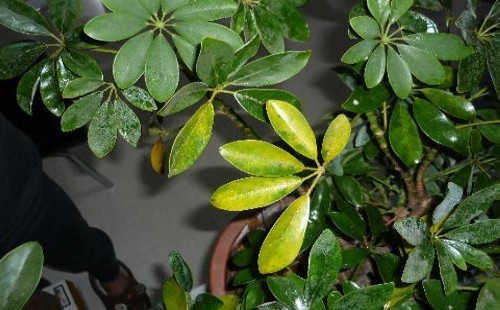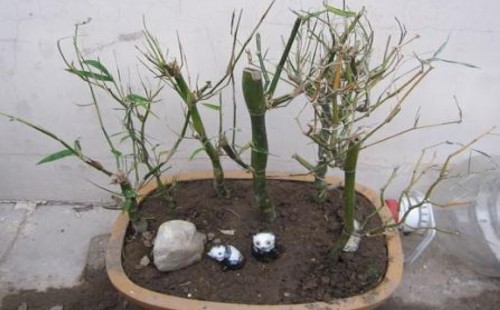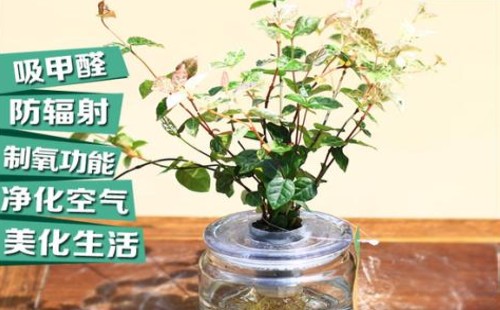What if the leaves of potted goose palm wood turn yellow?
Goose palm wood branches and leaves are very unique, and the leaves remain evergreen and glossy, so it is a rare indoor foliage plant. However, as foliage plants, their leaves are often yellowed due to the destruction of their growing environment. As a kind of foliage plant suitable for indoor cultivation, goose palm wood is also the same. So, what if the leaves of potted goose palm wood turn yellow?

To know what to do, first of all, we have to find the cause, so that we can take effective measures to change the status quo and quickly return to normal growth. On the other hand, the phenomenon of yellowing of leaves is often caused by the improper use of maintenance and management means, which leads to problems in the environment suitable for its growth, so the plant will appear this phenomenon of poor growth.
1. Improper lighting
Goose palm wood prefers semi-shady growth environment, but plants need light to complete photosynthesis. if the growth environment is too shady for a long time, the plant will not be able to carry out normal photosynthesis due to lack of light, thus affecting the growth of the plant and yellowing leaves. Excessive light will give off too much water because of the dense branches and leaves of the plant, and when the water can not be effectively replenished in time, the leaves will turn yellow. Therefore, in the process of growth, it is necessary to provide suitable light for it.
Second, improper watering
Goose palm wood prefer the moist growth environment, usually only need to feel the basin soil dry in time to replenish water, combined with water spraying. If the original soil or air humidity is too dry, it will often show the phenomenon of yellowing of leaves, but if too much watering causes root damage, it will also cause similar problems. Therefore, watering should be timely and appropriate, spring, summer and autumn usually do not water once for 3-4 days, watering should be strictly controlled in winter, but it should also be considered according to basin soil dry humidity and air humidity.
III. Improper fertilization
Improper fertilization may be caused by excessive fertilization, long-term non-fertilization or too little fertilization, which can easily lead to the yellowing of leaves. Excessive fertilization, mainly due to excessive concentration, fertilizer efficiency is too strong, resulting in root system burns and affect the normal absorption capacity. This will happen when the plant is unable to get water and nutrient supply. The long-term lack of fertilizer of the plant is similar to excessive fertilization to a large extent. When the plant is also unable to absorb the nutrients to maintain its growth, it will be unable to meet the growth needs and appear the phenomenon of yellow leaves. Therefore, the topdressing of potted goose palm wood should not only be timely, but also need to be scientific and reasonable, especially the concentration should be controlled well.
IV. Disease infection
When the plant is attacked by diseases such as leaf spot disease, the leaves will often turn yellow. However, the yellowing of the leaves caused by the disease is different from other concentrated situations. The leaf color usually appears brown when the disease occurs, but it turns yellow when it is serious. Moreover, usually when the leaves turn brown and yellow caused by the disease, the small plates usually become larger gradually. Therefore, once this situation is found, we should use the corresponding drugs to kill it in time.
The yellowing of leaves in foliage plants is mainly caused by the above factors, so it must be reasonable and rigorous when using maintenance and management means at ordinary times. Although this phenomenon is relatively common, we also need to try our best to prevent it, otherwise it not only affects the ornamental, but also may cause death to the plant. Therefore, do not let plants have all kinds of growth problems because of our negligence or improper management.
Time: 2019-05-30 Click:
- Prev

Control measures of withered and yellow branches and leaves of potted Phyllostachys pubescens
In the last article, the editor has introduced the phenomenon that the branches and leaves of potted Phyllostachys pubescens are withered and yellow due to improper maintenance and management. In order to avoid the phenomenon of withered and yellow branches and leaves of Phyllostachys pubescens, today I would like to share with you the relevant prevention and control measures. So, how to prevent and cure the withered and yellow branches and leaves of potted bamboo?
- Next

Can mosaic collaterals be hydroponically cultured or hydroponically raised?
Huaye Luoshi is an evergreen vine, but at the same time it has woody branches and vines with faintly visible lenticels. And the leaves of the plant are rich in color, colorful leaves, giving people a colorful visual experience, is a rare foliage plant. Because the plant is rich in color, strong in spleen and strong in resistance.
Related
- Fuxing push coffee new agricultural production and marketing class: lack of small-scale processing plants
- Jujube rice field leisure farm deep ploughing Yilan for five years to create a space for organic food and play
- Nongyu Farm-A trial of organic papaya for brave women with advanced technology
- Four points for attention in the prevention and control of diseases and insect pests of edible fungi
- How to add nutrient solution to Edible Fungi
- Is there any good way to control edible fungus mites?
- Open Inoculation Technology of Edible Fungi
- Is there any clever way to use fertilizer for edible fungus in winter?
- What agents are used to kill the pathogens of edible fungi in the mushroom shed?
- Rapid drying of Edible Fungi

